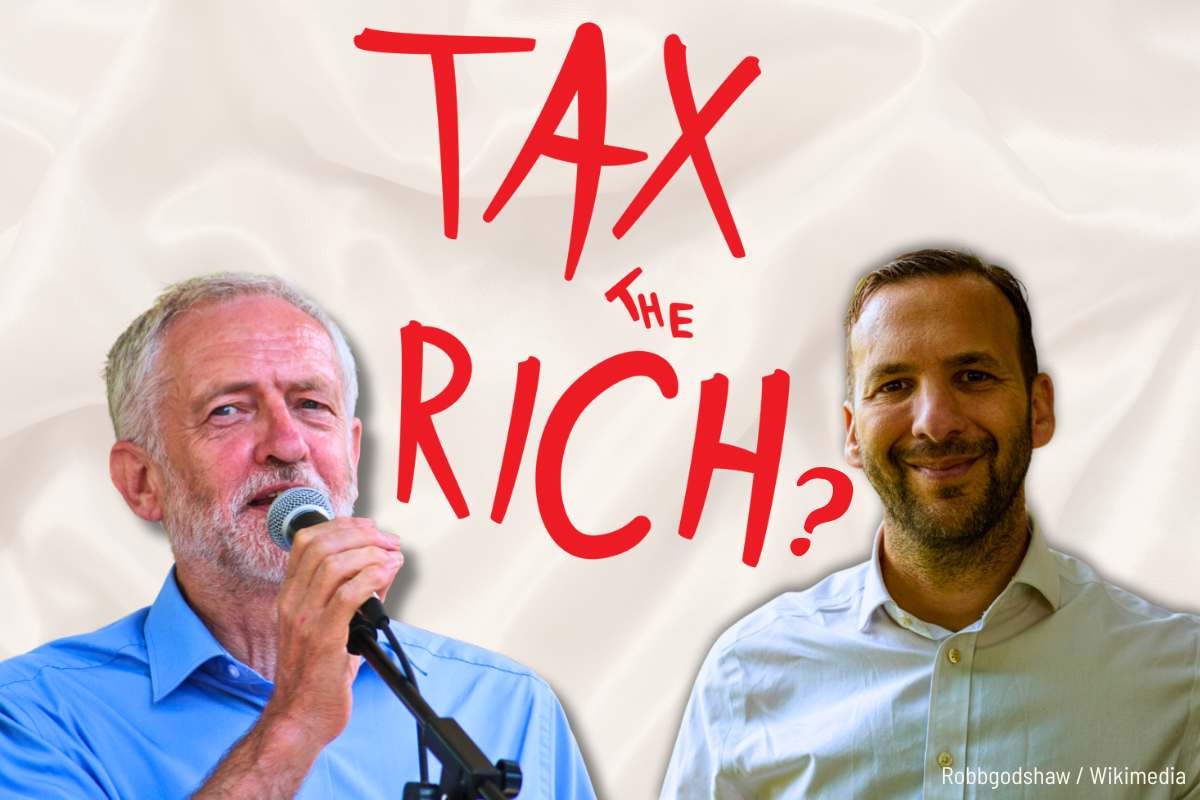Netflix documentary The Social Dilemma details the adverse effects of social media on our lives. Although the film helps shine a light on the murky practices of Big Tech, it fails to offer any real solutions to the problems it identifies.
In his latest documentary, director Jeff Orlowski presents us with a chilling look into the unscrupulous business and design practices of social media companies, and the impact these have had on wider society.
The film itself is refreshingly overt in its mission statement for a more human-centric social media design philosophy, which aims to maximise human enjoyment and enrichment.
This is unsurprising, given the film was bankrolled by the Center for Humane Technology, a US non-profit organisation founded by Tristan Harris, himself a former silicon valley engineer.
Various former tech workers, executives, researchers and authors, including Harris himself, tell us in a series of quick-cut interview segments about their past work in social media companies. They detail how in their own views, their past work has essentially made our lives worse.
The interview segments are interspaced with a dramatisation of a middle-class suburban family’s teenage children, and their relationship with social media.
To the film’s credit, it does not shy away from gesturing in the direction of the problem: the profit motive that drives all economic activity under capitalism.
However, as with many other works in the growing genre of media that dissects a particular problem within modern capitalist society for our “edutainment”, it assumes the profit motive to be inherently untouchable. Therefore its analysis is limited to just the design of the technology itself.
Algorithms and ad revenue
The first third of the film is definitely worth watching as this is where we get a glimpse into the underlying design of the services and their features.
It is explained in great detail how every aspect of the design of any given social media service – from the user interface, to the recommended content feeds, even to the notifications – was designed to exploit human psychology in order to entice users into giving these services as much attention as possible.
The film presents us with three goals that drive all these design decisions; growth (expanding the size of the user-base); engagement (getting the users to use the service more often and more actively); and monetisation (opportunities to show advertisements to the users).
The first two goals are of course, in thrall to the last one, which governs the bottom-line.
The more time a user spends on a given service, the more advertisements they can be shown. The more the user interacts with the service, the more data can be gathered, which helps the algorithms create a more complete profile of that user.
As we have explained before, a social media company’s real customers are advertising companies. The product is access to their trove of data, and the algorithms that can figure out what ads are ‘best’ tailored to any given user.
It is one of the absurdities of capitalism that these highly sophisticated digital systems are being put to the task of figuring out what sort of energy drink to sell to us.
It is encouraging that the interviewees do not consider the technology to be inherently evil, but that the problem stems from the way in which it was designed.
However it is clear that those interviewed during the course of the film are terrified of the power, both real and exaggerated, of this digital “Frankenstein’s monster” they have helped create.
Mental health
 To begin with, the point is raised about how the need for constant “engagement” led to the design of features that psychologically exploit our innate desires for social approval. We are then left to feel hollow and upset when we lack the gratification these services can offer.
To begin with, the point is raised about how the need for constant “engagement” led to the design of features that psychologically exploit our innate desires for social approval. We are then left to feel hollow and upset when we lack the gratification these services can offer.
Treating social media like a drug, the film gives the example of the younger generations of the more advanced capitalist nations, who have grown using social media since they were in their early teens. It points out that they are also the most anxious and depressed compared to older generations.
While these generations are indisputably the hardest hit by the mental health crisis, the film fails to mention how they grew up in the wake of the financial crisis of 2008 and the resulting austerity. This has sent the wage-earners of their families into unemployment, degraded the quality of their schools, and limited their own future job prospects.
The film correctly raises the point that the advertisement industry, and the media in general has always aimed to manipulate people with calculated psychological trickery. But that social media, with its sophisticated algorithms and addictive attention-grabbing design, can do this much better than previous forms of media.
This is surely a factor leading to greater issues of alienation and poor mental health amongst some people. Yet giving social media the sole credit for mental health issues misses the real, profound harm caused by the more systemic issues the capitalist crisis has brought to the fore.
Political polarisation
Where the film falls flat, however, is in its attempts to pin the blame for the political polarisation within society squarely on the shoulders of social media.
The argument put forward is essentially that because the social media algorithms are only trying to maximise engagement, they are designed in such a way as to recommend or show us content that is similar to content the algorithm knows we appreciate already. So far so good.
This leads to people being shown only content that agrees with their political views, leading to them remaining in ‘echo-chambers’ where it seems every source agrees with them. From there, there is nowhere to go but towards more ‘extreme’ content, and this is allegedly what leads to the growth of more extreme ‘populist’ views and the growth of conspiracy theories.
We have explained before that the rise of so-called ‘populism’ (read: views the ruling class do not like) is a result of the collapse of liberal establishment politics in the face of the crisis of capitalism. Likewise the rising popularity of conspiracy theories reflect a layer’s instinctive yearning for ideas that can explain their own distrust of the establishment.
In such a political climate, the role played by social media can only be that of a catalyst, speeding up the process by which someone with reactionary views takes those views to their logical conclusion.
The film’s liberal interviewees do not consider the real situation outside the online world, and so they do not explain to us why people are drawn into such echo-chambers in the first place. We are left to imagine the switch from centre-right or centre-left political views to some kind of ‘populism’ happens entirely because YouTube algorithms select our content for us.
Instead, the billionaire-owned media is presented as the truthful alternative to all this scary populist ‘Fake News’. As if the growth of ‘Fake News’ is not a result of people increasingly seeing the inadequacies of the media that serves as nothing more than the mouthpiece of a ruling class whose system is rotting on its feet.
Solutions
 It is no surprise then, that the film itself cannot offer us any real solutions to the problems it raises. This is as it does not consider the abolition of the profit motive – and thus capitalism – to be worth considering at all.
It is no surprise then, that the film itself cannot offer us any real solutions to the problems it raises. This is as it does not consider the abolition of the profit motive – and thus capitalism – to be worth considering at all.
Laughably, the film ends by telling the viewer to essentially “vote with their likes” by disconnecting from as much social media as possible. This is even more useless than the usual liberal battle-cry of “vote with your wallet!”
“Just put down your phone” is quite a limp ending to nearly 80 minutes of lecturing on how our weak human brains are helpless against the might of algorithms a bunch of tech nerds invented some two decades earlier.
This does not even address the point that some social media services (e.g. G-suite, Slack, and so on) are now basically mandatory for many workers in their day-to-day work life.
When it comes to reforming the system, we get an even thinner broth to nourish us. There are some vague mentions of legal regulations on social media companies to curb the spread of misinformation, hate speech and ‘populism’.
While the labour movement and society at large should have no place for reactionary hate speech or misinformation, such changes to the existing social media landscape would just give the likes of Mark Zuckerberg the power to decide what is acceptable content and what is not.
Such regulations themselves do not change the existing political mood in society, which will find other ways of expressing itself online. This is already happening now, with many reactionary Twitter users migrating over to Parler. This advertises itself as a ‘free-speech’ service that will provide a safe space for them to spew their bile without restraint, further accelerating the ‘echo-chamber’ effect.
Socialise social media
The clearest solution the film advocates for, but offers no steps towards, is instead a total ground-up redesign of social media services themselves, with human well-being in mind.
This is obviously something any socialist would support, even if we understand that mental health problems are not entirely the fault of social media. We welcome any positive reforms we can get, after all.
But how is this redesign to happen? The big tech monopolies are incredibly profitable, and constantly competing. Would they really just accept being forced to create less-addictive, less-intrusive platforms?
Would an advertiser prefer to buy ad-space on a service that tracks more about its users, or less? Would this advertiser rather do this on a service that can probably keep a user’s attention, or one that goes out of its way to ensure users put the phone down for the sake of their health?
The capitalists do not care about our health beyond that which is needed to make us into productive workers. That is why these concerns were never considered in the initial designs of these services to begin with.
And since social media has become a part of daily life for billions of people, tackling the issues in its design is indeed an important task.
But to do this, we must de-couple not just social media, but media in general from the profit motive. This can only be done by nationalising the big tech monopolies, turning their services into open-source projects accessible to the community of technical workers, and drawing up a rational plan of production to re-design technological services to serve human well-being and enjoyment, not private profit.
In short, the problem is even more fundamental than the design of the social media apps. It is in the economic system under which these apps were produced – capitalism. This is why all these apps, developed by different teams, in different times and places, all share the same set of design flaws that the film has just pointed out to us.
Capitalism is what is sending millions into precariousness or outright destitution. It is what pays journalists both ‘real’ and ‘fake’ to spew divisive propaganda that gets us to turn on one another and ignore the degradation of our planet. And so it is capitalism itself that must be done away with.
The real ‘Social Dilemma’ we face is not “bad social media and profits” vs “better social media and less profits”. It is the same dilemma that we faced 100 years ago: socialism or barbarism.






